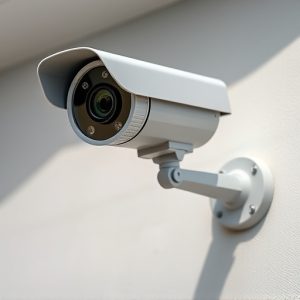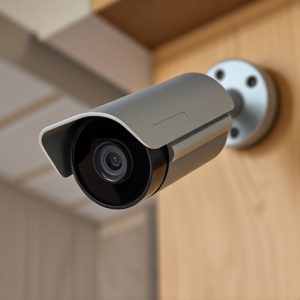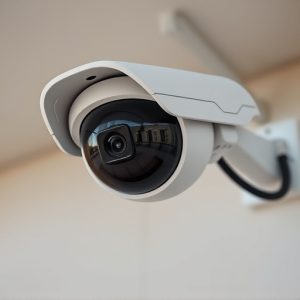Spy Camera Lens Detection: Protecting Privacy Against Dummy Cameras & Battery Life Comparison
Spy camera lens detection has advanced with smartphone apps that help users uncover hidden cameras,…….
Spy camera lens detection has advanced with smartphone apps that help users uncover hidden cameras, boosting privacy protection. One critical method involves comparing dummy cameras (disguised as everyday objects) and genuine devices based on battery life consumption. Dummy cameras, due to their simplified electronics, typically have lower power usage, making them easier to spot compared to traditional cameras. This simple yet effective approach encourages vigilance in safeguarding personal spaces from surveillance by identifying suspicious battery behavior indicative of hidden lenses.
In the digital age, privacy concerns are at an all-time high. One emerging threat is the proliferation of dummy cameras, discreetly placed to record without consent. This article delves into the crucial topic of spy camera lens detection using smartphones, a powerful tool for identifying these hidden dangers. We explore strategies like dummy cameras battery life comparison to uncover their true nature and protect personal spaces. By understanding these tactics, users can stay ahead and safeguard their privacy in today’s tech-driven landscape.
- Understanding Spy Camera Lens Detection
- Dummy Cameras: A Growing Concern
- Battery Life Comparison: Uncovering the Truth
- Strategies to Stay Ahead and Protect Your Privacy
Understanding Spy Camera Lens Detection
Spy camera lens detection has become an increasingly important tool in the digital age, allowing users to uncover hidden cameras and protect their privacy. With advancements in technology, smartphone apps have been developed to identify and locate these clandestine devices, providing a sense of security. One key aspect is recognizing dummy cameras, often disguised as everyday objects like smoke detectors or power outlets, which can be easily overlooked. These fake lenses are designed to mimic real camera setups but lack the signature electronic components, making them harder to detect with traditional means.
The ability to compare dummy cameras’ battery life against genuine devices is a crucial part of this process. Unlike regular security cameras, dummy models often have lower power consumption due to their simplified electronics. By analyzing battery drain patterns, users can spot suspicious behavior and potentially identify hidden lenses. This simple yet effective method empowers individuals to become more vigilant and proactive in safeguarding their personal spaces from invasive surveillance.
Dummy Cameras: A Growing Concern
Dummy cameras, also known as fake or spy cameras, have become a growing concern in today’s digital age. These devices are designed to mimic the appearance of genuine cameras but are often hidden and used for secretive surveillance, raising significant privacy issues. With advancements in technology, these dummy cameras have evolved to look increasingly realistic, making it difficult for users to distinguish them from actual photography equipment.
In terms of battery life comparison, dummy cameras typically consume less power due to their inactive state, staying discreetly turned off until triggered. Unlike regular cameras that constantly capture and store footage, dummy cameras only become active when motion is detected, conserving battery life. This feature makes them appealing for those seeking a covert surveillance solution while considering the importance of extended battery usage in order to avoid frequent replacements or recharging.
Battery Life Comparison: Uncovering the Truth
In the world of spy camera lens detection using phones, one crucial aspect often overlooked is the battery life comparison between regular and dummy cameras. As users become more vigilant about uncovering hidden lenses, the role of portable devices in this process becomes increasingly significant. When it comes to battery performance, dummy cameras designed for testing purposes often exhibit superior endurance due to their simplified functionalities compared to mainstream smartphone cameras.
This difference is particularly notable when conducting extensive scans or running continuous tests. Regular cameras, with their advanced features and image processing capabilities, naturally drain batteries faster. As a result, users may find themselves frequently recharging their devices during lengthy surveillance operations. Conversely, dummy cameras, engineered specifically for battery life comparison tests, can operate for extended periods on a single charge, providing a reliable power source for thorough investigations.
Strategies to Stay Ahead and Protect Your Privacy
Staying ahead of spy camera lens detection is an ongoing battle for privacy advocates. One effective strategy is to invest in dummy cameras that mimic real devices but lack any recording functionality. These can be placed at home or office entrances, acting as a visual deterrent and alerting you to potential hidden lenses. Regularly updating your phone’s security settings and using trusted anti-spyware apps can also help.
When it comes to protection, battery life plays a crucial role. Spy cameras often consume significant power to stay active and undetected, leading to frequent recharging or quick battery drain. Compare dummy camera models based on their battery life; those with longer durations offer greater peace of mind. Additionally, keeping your phone’s software updated enables security patches that further safeguard against potential privacy breaches.
Spy camera lens detection using smartphone technology is a crucial step in staying ahead of covert surveillance. As we’ve explored through our discussion on dummy cameras, their prevalence as a privacy threat is undeniable. By understanding how these devices operate and employing strategies to detect them, such as Battery Life Comparison analysis, individuals can protect their personal spaces and digital privacy. It’s essential to remain vigilant, as technology evolves, so too must our methods of safeguarding ourselves from unwanted intrusions.


